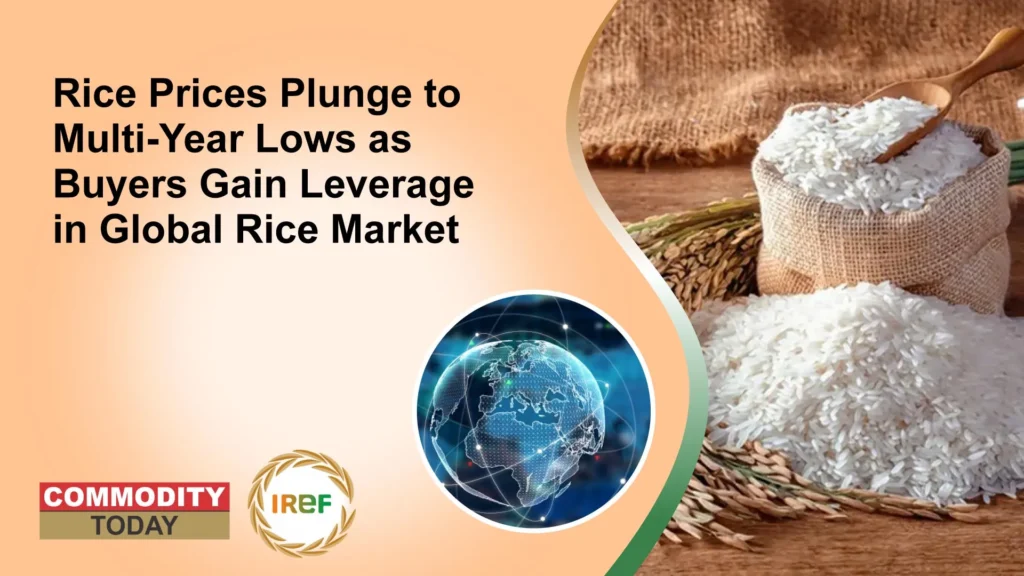Rice Prices across Asia have fallen sharply to multi-year lows, depicting a major correction in the global rice market as record harvests and subdued demand have reshaped international agricultural trade. Benchmark export prices have tumbled amid abundant rice supply, offering buyers unprecedented leverage and relief for food-importing nations grappling with inflation pressures.
In this context, 5% broken white rice in Thailand — the region’s key export benchmark — has dropped to around $340 per tonne, marking an 18-year low. A bumper crop and swelling inventory have intensified competition among exporters, driving prices lower across the region. Meanwhile, India, the world’s largest rice exporter, has seen its export quotes sink to their weakest level since 2016. The fall comes amid a depreciating rupee and slower overseas orders, reflecting a broader downturn in the rice economy. Though the Vietnam’s rice market has been comparatively stable, but export volumes have plunged more than 40% year-on-year as rice buyers like the Philippines scaled back imports amid comfortable local stocks. Across Asia, the ongoing price correction underscores how record rice production has outpaced consumption, tipping the balance of power toward rice importers.
Currency movements have further shaped trade dynamics. Thailand’s stronger baht has hurt its export competitiveness, while India’s weaker rupee has provided limited relief against falling rice prices. As a result, importers from the Middle East and Africa are delaying purchases, expecting additional declines.
Slowdown in Demand has Pressured Rice Prices
Outside Bangladesh — which recently bought 50,000 tonnes of Indian rice through a government tender — most rice importers remain cautious. The slowdown in demand has pressured freight rates and delivery premiums, confirming what traders describe as a “clear buyer’s market.”
The current global food market scenario also intersects with shifting geopolitical and trade alignments. Analysts note that evolving India Iran relations and broader Iran India trade cooperation could influence future agricultural trade flows, particularly as both nations explore new frameworks for commodity exchange, including rice and other staples. For now, abundant rice supply has eased food inflation in key importing nations, bringing short-term relief after the volatility of the 2023–24 El Niño period and India’s temporary export restrictions. However, experts caution that any disruption in weather or policy could quickly reverse the trend.
With record rice production, large carryover stocks, and slow demand, the global rice market has entered a rare period of price stability and affordability. As the balance shifts toward rice buyers, the coming months could redefine the dynamics of rice economy and global agricultural trade.



